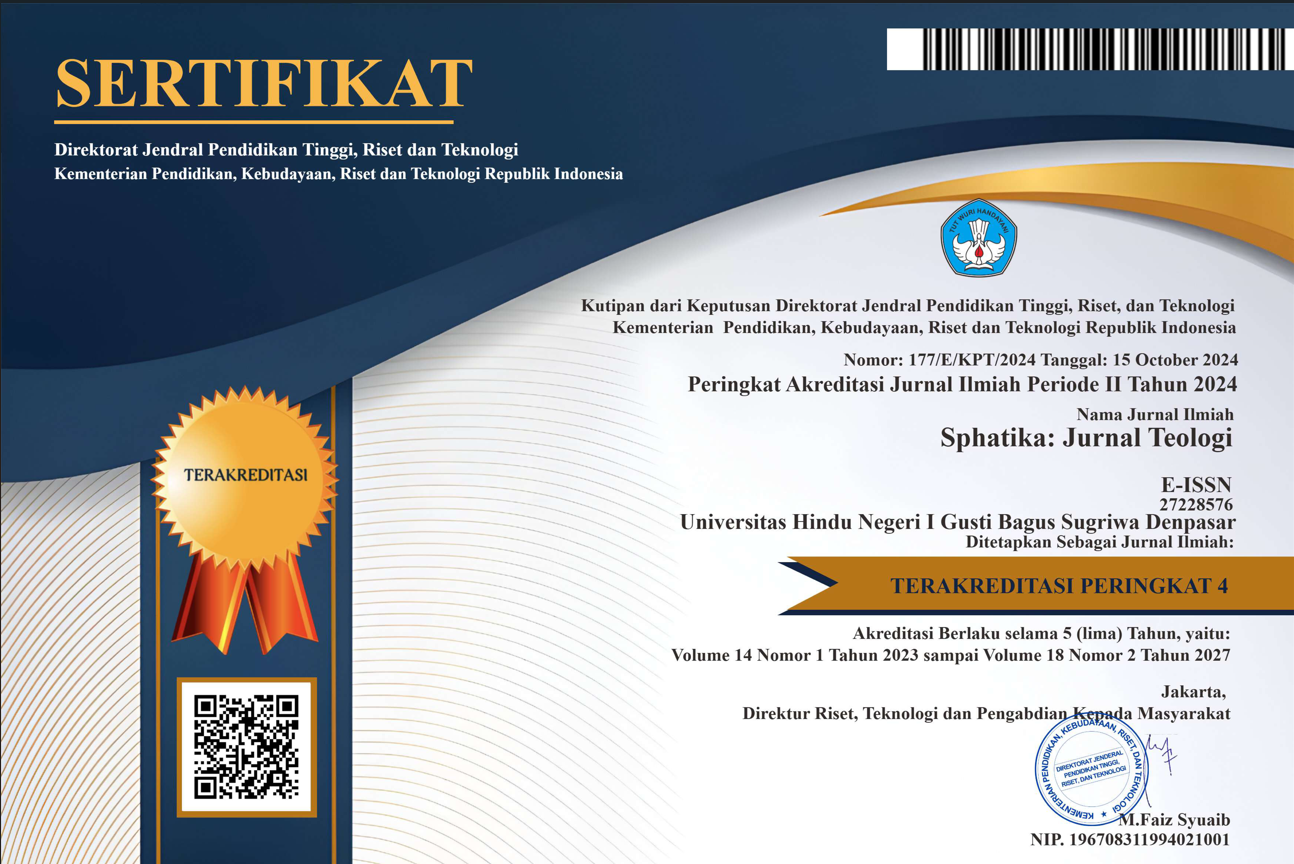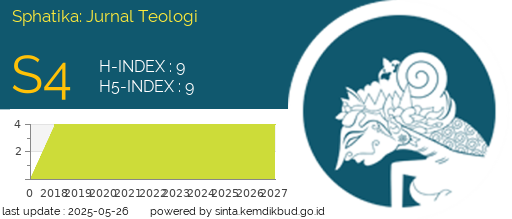Implementasi Mitologi dan Simbol Ganesha dalam Budaya Kontemporer Masyarakat Bali
DOI:
https://doi.org/10.25078/sphatika.v12i2.1128Keywords:
contemporary culture; ganesha; implementationAbstract
Culture and mythological narratives about Ganesha are inherent in the life of the Hindu community in Bali, but have undergone various changes along with the pace of civilization. Evidently, Ganesha as one of the sacred symbols is widely used in various life interests of modern society, which has no relevance to the sacred context. This paper analyzes the implementation of Ganesha's symbolic mythology in the contemporary cultural space of Balinese society. Mythologically, Ganesha is believed to be the son of Shiva who has the power to overcome all obstacles. This mythology is contained in the attributes of Ganesha which have a symbolic meaning. The full embodiment of the Ganesha symbol in the modern era is widely implemented in the contemporary culture of Balinese life, both in the fields of architecture, aesthetics (art), social organization, including economic life. This work is expected to be a reference for fostering a critical and selective culture when using the Ganesha symbol in various aspects of Balinese life.
References
Abdullah, Irwan. 2006. Kontruksi dan Reproduksi Kebudayaan. Yogyakarta: Pustaka Pelajar.
Ardani, Ni Made. 2017. Nilai pendidikan agama hindu dalam penempatan patung ganesha di desa manistutu kecamatan melaya kabupaten jembrana. Jurnal Penelitian Agama Hindu, I (2), hlm. 371-375.
Bisnis Bali, 26 Juni 2018, halaman 1. “Bisnis Baju Kaos Gambar “Ongkara” Dan “Genesha” Prospektif”.
Dharmayuda, I Made Suasthawa. 1995. Kebudayaan Bali: Pra Hindu, Masa Hindu dan Pasca Hindu. Denpasar; CV. Kayu Mas Agung.
Hartoko, Dick & B.Rahmanto. 1998. Kamus Istilah Sastra. Yogyakarta: Kanisius.
Herusatoto, Budiono. 2000. Simbolisme dalam Budaya Jawa. Yogyakarta: Hanindita Graha Widia.
Indrayasa, Kadek Bayu. 2018. Patung Ganesha: suatu kajian teologi. Genta Hredaya, II (1), hlm. 88-94.
Joko, I Ketut. 2016. Memahami Mitology Dan Simbolis Dewa Ganesha: http//www.mantrahindu.com/2016/07/memahami-mitology-dan-simbolis-dewa-Ganesha/. (Diakses, 9/10/2017).
Kartika, Darsono Sony. 2004. Seni Rupa Modern. Bandung: Rekayasa Sain.
Keramas, Dewa Made Tantra. 2008. Putra Sesana: Sistem Pendidikan Demi Ajegnya Bali. Surabaya: Paramita.
Kumbara, A.A Ngurah Anom. 2008. Ajeg Bali Dalam Pusaran Arus Globalisasi: Kritik Epistimis. Denpasar: Fakultas Sastra Universitas Udayana.
Mutakin, Anwar. 2006. Individu, Masyarakat, dan Perubahan Sosial. Bandung: Rosda.
Piliang, Yasraf Amir. 2011. Dunia yang Dilipat. Bandung: Penerbit Matahari.
Putra, I Nyoman Miarta. 2009. Mitos-Mitos Tanaman Upakara. Denpasar: PT Pustaka Manik Geni.
Putrayasa, I Nyoman; Karsana, I Putu; Sujana, I Made. 2020. Visualisasi imagine ganesha sebagai media komunikasi visual dalam seni patung. Stilistika, IX (1), hlm. 1-13.
Setyaningrum, Arie. 2002. Kajian budaya kontemporer. Jurnal Ilmu Sosial dan ILmu Politik, VI (2), hlm. 229-244.
Susanto, Mikke. 2011. Diksi Rupa. Yogyakarta: Dicti Art Lab Yogyakarta dan Jagat Art Space Bali.
Tim Penyusun. 2001. Kamus Besar Bahasa Indonesia Edisi Ke Tiga. Jakarta: Balai Pustaka.
Tim Penyusun. 2008. Kamus Besar Bahasa Indonesia. Jakarta: Balai Pustaka.
Titib, I Made. 2009. Teologi Dan Simbol-Simbol Dalam Agama Hindu. Surabaya: Paramita.
Turner, Bryan S. 2003. Agama Dan Teori Sosial. (Terj. Inyiak Ridwan Muzir). Yogyakarta: IRCiSoD.
Widana, I Gusti Ketut. 2018. Kapitalisasi Ikon Ganesha Dalam Industri Pariwisata di Ubud Bali, Prosiding Seminar Nasional Agama, Adat, Seni Dan Sejarah Di Zaman Milenial. Denpasar, 5 September, Universitas Hindu Indonesia.
Widana, I Gusti Ketut. 2018. Tatto Ganesa, Tatu Bagi Umat Hindu. https://www.unhi.ac.id/id/agama-budaya/detail-agama-budaya/TATTO-GANESA,-TATU-BAGI-UMAT-HINDU (Diakses, 2 Agustus 2021).
















